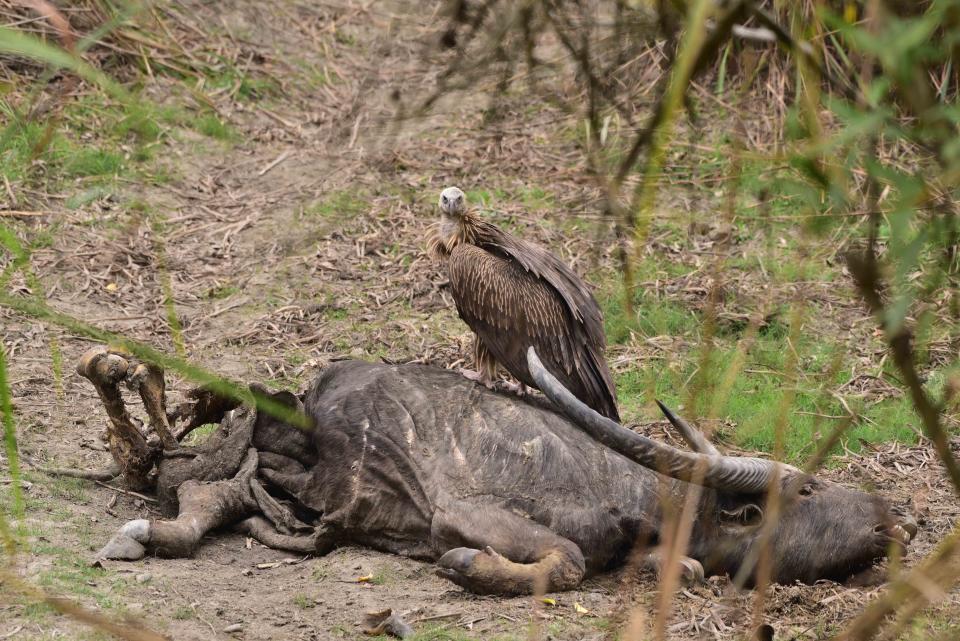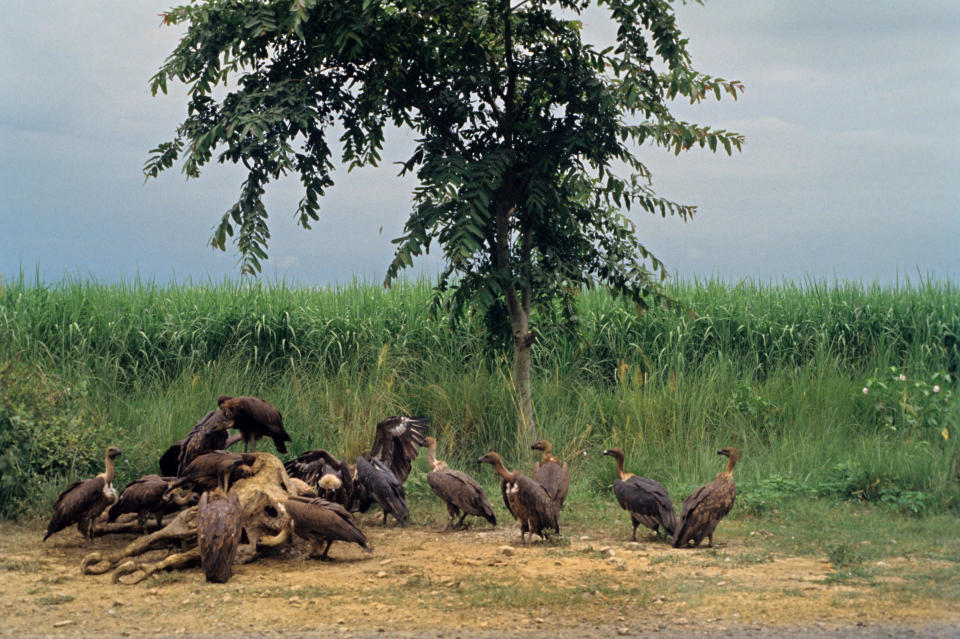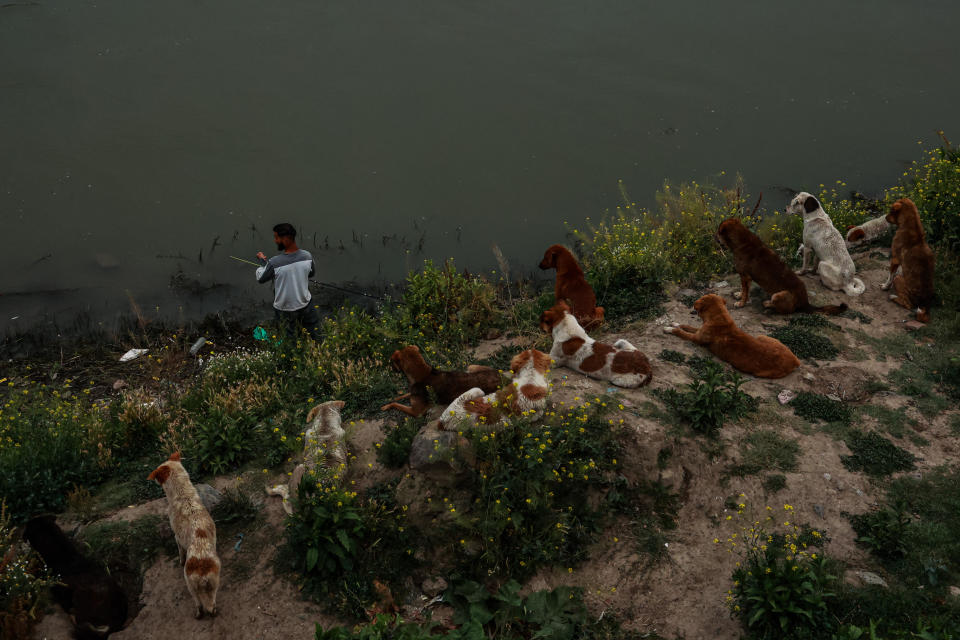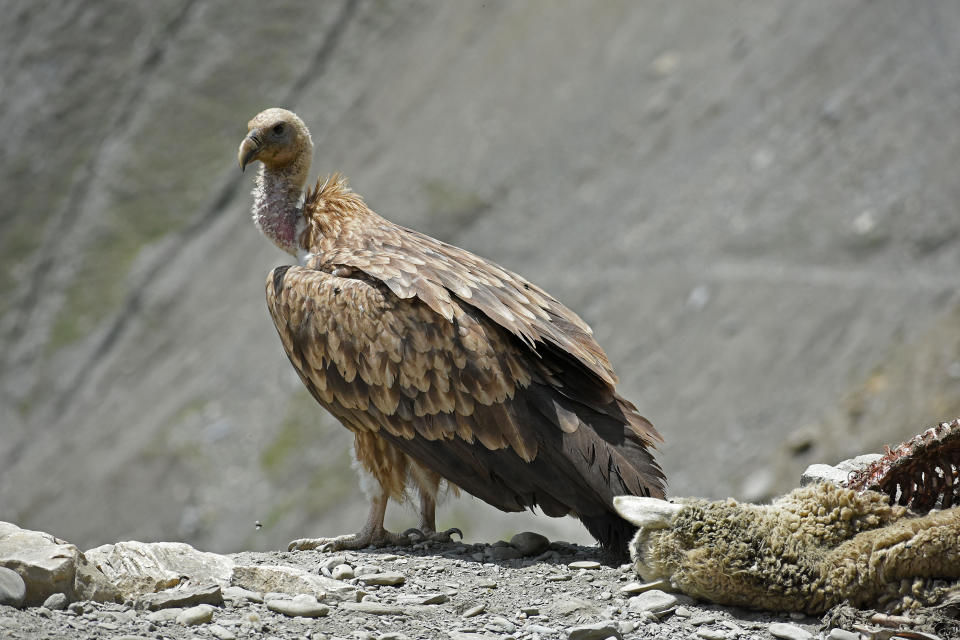New Delhi — Scientists say the zealous use of a painkiller by Indian farmers for their cattle in the 1990s has led to the unintentional deaths of half a million people and huge economic losses — not from any harm done to the cattle themselves, but from the deaths of millions of vultures, which historically preyed on the animals’ remains before they could rot and become carriers of disease.
In the early 1990s, a painkiller called diclofenac was off-patent, making it cheap and widely available to India’s vast agricultural sector. Farmers use it to treat a wide range of ailments in cattle. But even small amounts of the drug are deadly to vultures. Since its widespread use in India, the native vulture population has plummeted from a whopping 50 million to just a few thousand, and according to a study published by the American Economic Association, the impact on humans has been immense, reflecting the vital role played by scavengers.
Vultures have been an important part of Indian ecosystems for centuries. According to the authors of the study, “The Social Costs of Keystone Species Collapse: Evidence from Vulture Declines in India,” large, domesticated birds are a “keystone species” — a species that plays an irreplaceable role in an ecosystem.
They are the only scavengers that feed entirely on carrion, and they do so extremely efficiently, quickly devouring the remains and leaving little behind to spread disease. India’s vultures eat at least 50 million carcasses each year before their populations start to decline, the study authors say.

In this way, they prevented dead farm animals from rotting and also prevented deadly bacteria and other pathogens living in carcasses from infecting human communities.
“In a country like India where beef is banned, most cattle end up as carrion,” Anant Sudarshan, an assistant professor of economics at the University of Warwick in England and co-author of the study, told CBS News. “Vultures provide an incredible disposal service for free. … It takes about 45 minutes for a group of vultures to turn a cow carcass into bones.”
The vultures’ voracious appetites have also helped keep populations of competing scavengers, such as feral dogs and rats, in check, which can spread rabies and many other diseases.
In 1994, farmers began giving diclofenac to their cattle and other livestock. The drug causes kidney failure and death in vultures that feed on the carcasses of animals given the painkiller, and the birds’ population fell from 50 million to just 20,000 over the next decade.
With no vultures around to do the job, farmers began dumping their dead animals into local water sources, causing water pollution and providing another way for pathogens to reach people.


Sudarshan and study co-author Eyal Frank, an environmental economist at the University of Chicago Harris School of Public Policy, studied the impact of a dramatic decline in vulture populations on human health by mapping vulture habitats with health data from more than 600 districts in India. They said their research showed that 100,000 human deaths each year between 2000 and 2005 could be linked to declining vulture populations.
It also shows economic losses associated with premature human deaths, estimated at $69 billion per year, largely due to declining scavenging populations.
According to their research, these deaths were caused by the spread of diseases that a thriving vulture population would have reduced. Stray dog populations, and with them the spread of rabies, also increased over time, and the amount of bacteria measured in many local water sources also increased.
“India is now the largest rabies “The stray dog population has increased significantly around the world,” Sudarshan told CBS News.


Without a major vulture recovery, the spread of disease and related deaths will continue in the coming years, and health care costs will increase, the study authors said.
India banned diclofenac for veterinary use in 2006, but Sudarshan said the ban needed to be enforced much more effectively. He and Eyal called for more conservation funding to boost vulture populations, but warned that even if the Indian government made a major effort, it would take at least a decade for the species to bounce back to the extent required because they are “slow breeders”.
Instead of bringing back vultures, India could set up a network of incinerators across the country, but that would cost an estimated $1 billion a year, use huge amounts of energy and create significant air pollution, which is already a major problem for India, Sudarshan said.
“Therefore, it makes more sense to bring back natural processing of the millions of animal carcasses that India produces every year,” he said.
He said that urgent work needed to be started, “Vultures started dying in the 1990s. India has not done anything for 30 years.”


The government spends about $3 million a year Save India’s native tigersWhile Sudarshan said vultures may be much less of a tourist attraction, there is a broader question of “the basis of our conservation policy”.
“Our article shows the cost of losing them [vultures] “It’s about $69 billion a year, which is much more than any benefit the tiger provides,” he said, adding, “We need to think in terms of cost-effectiveness and growth, how should we make choices about how to protect the species?”
“Understanding the role vultures play in human health underscores the importance of protecting wildlife, not just the cute and cuddly ones,” says co-author Frank. “They all have a role to play in our ecosystems that impacts our lives.”
Harris campaign releases video showing Trump mugshot
California Park Fire Expands, Jasper Takes on Canadian Fire’s Impact
Can Harris maintain her momentum in the 2024 election?